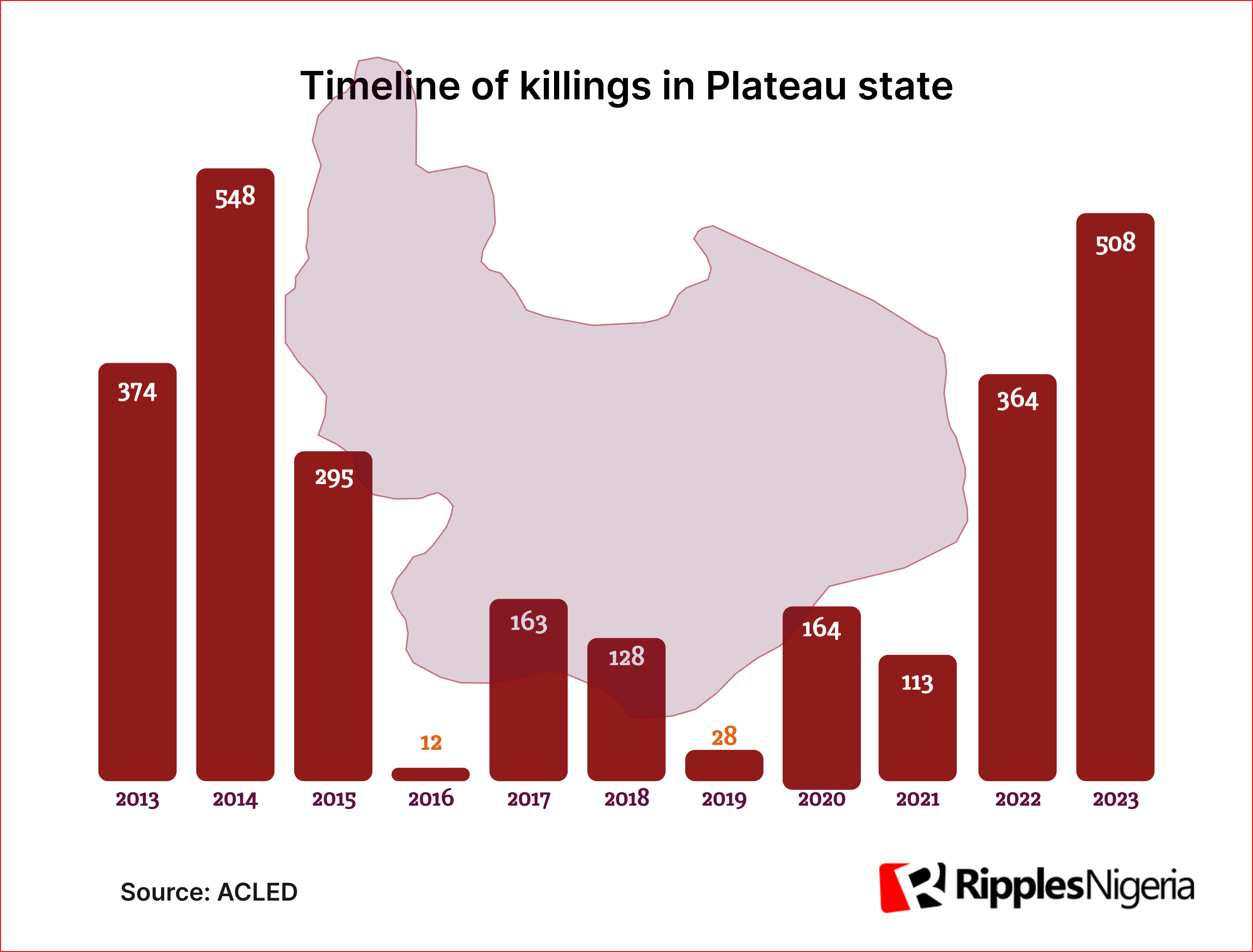Ripples Metrics
RipplesMetrics… Timeline: A decade of killings in Plateau State

Nigeria’s Plateau State has been a hotspot for violent attacks in the North Central of Nigeria. The state, despite being home to more than 40 ethnic groups, has experienced insecurity crises like bandits attacks, farmers and herders clashes as well as ethnic or religious crises.
These attacks have led to the death of hundreds of people in several communities, and the destruction of homes, farmlands and properties.
Data gathered showed that these attacks started as far back as 1994 during an ethnic dispute in Jos following the appointment of Alhaji Mato as the sole administrator for Jos North LGA. The crisis was said to have claimed five lives. The preceding year, a land dispute between Mwaghavuls and the Ron people escalated into a conflict that destroyed several houses and properties.
Also, in 1997, the Gyero road crisis in Bukuru, Jos began when a Berom man picked a garden egg from a Hausa-Fulani farmer’s field. This led to the death of six people. Between 2000 and 2023, no less than 13 incidences were recorded in the state.
For instance, in 2023, Ripple Metices reported that a total of 8,734 people were killed in various insecurity incidents that occurred of which 1,090 deaths were recorded in the North Central. In Plateau State alone, a total of 508 deaths were recorded which is about 47 per cent of the death within the region.
READ ALSO:RipplesMetrics: Nigeria’s capital inflow dwindles by 84% in five years
Recently, the former Chairman of the House of Representatives Committee on Science and Technology, Hon. Dachung Musa Bagos, condemned the killing of four people in the Miango District of the Bassa local government area of Plateau State.
According to the lawmakers, Nigeria is long overdue for the creation of state police due to the insecurity crises within different states in the country.
RipplesMetrics collected data from the Armed Conflict Location & Event Data Project (ACLED) to see how the death rate has increased over the last decade. Between 2013 and 2018, a total of 1,520 people were killed while between 2019 and 2023, 1,117 were reported dead.
Further findings showed that within the last 10 years, the state only recorded fewer killings in 2016 and 2019. Also, more than 500 deaths were recorded in 2023 and 2014. The highest killing was recorded in 2014. The data also showed that there has been a consistent rise in the death rate in the last three years.
The recurrent crises have forced the governor, Caleb Mutfwang, to carry out several measures like imposing a curfew in some communities, and declaring a seven-day of mourning period for victims as well as some groups leading rallies against the crises.
By James Odunayo
Join the conversation
Support Ripples Nigeria, hold up solutions journalism
Balanced, fearless journalism driven by data comes at huge financial costs.
As a media platform, we hold leadership accountable and will not trade the right to press freedom and free speech for a piece of cake.
If you like what we do, and are ready to uphold solutions journalism, kindly donate to the Ripples Nigeria cause.
Your support would help to ensure that citizens and institutions continue to have free access to credible and reliable information for societal development.
























